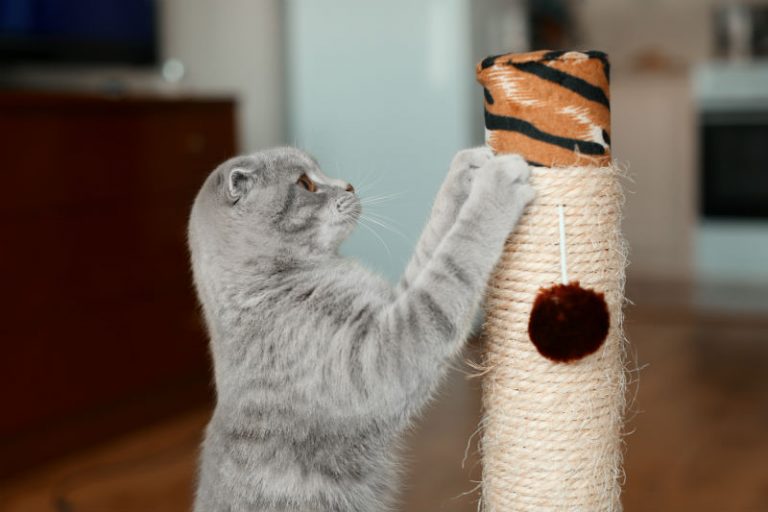First of all, let’s talk about why cats scratch. Cats ‘scratch’ on items for two reasons. The reason we think of them most often is to sharpen their claws. But scratching also serves another purpose. When scratching on items such as furniture or scratching posts, cats leave scents from the sweat glands on the pads of their paws and between the pads. The scent left behind says, ‘I was here, and this is my territory’. Once their scent is on an object, they often return to the object and apply their scent again.
We can use this information to our advantage when trying to get a cat to use a scratching post. If we can get a cat’s scent on the post (put a little catnip on the post to get the cat to scratch), the cat will likely come back to the post to replenish his scent. Similarly, it is helpful to remove the cat’s scent from objects that the cat has been scratching on, but we wish he wasn’t.
What are my options?
Get a Scratching Post
- Try different kinds of scratching posts. Some cats prefer real wood posts, while others prefer cardboard and carpeted posts. Find out which kind your cat prefers, and then spray it with catnip or keep a catnip toy nearby.
- Finally, show your cat how to use the scratching post and praise or give your kitty special treats when they use their furniture instead of yours. Like most training, the earlier you start, the better. Remember though, kittens younger than six months generally do not respond to catnip as well as adults do. You may need to try other incentives.
- The most important characteristics of a post are that it is taller than the cat when he stands on his hind legs, sturdy enough not to tip over and located in a prominent, accessible area. The more scratched and awful looking, the more your cat will love it and use it instead of your furniture
Try Soft Paws
- These are plastic shields glued onto your cat’s nails. They prevent scratching, but they do require application and patience from your cat. Re-application is needed every 4-6 weeks. We provide the application service at our hospital.
Nail Trims
- If your cat has clear nails (most do) you can see the pink or the ‘quick’. Avoid the pink area as this supplies blood to the nail, and if trimmed, it will bleed. At Westwood Hills Veterinary Hospital, we offer nail trims. Trimming the nails every 1-2 months should keep them short. Cats can still scratch, but they will do ‘less damage’ to the furniture.




